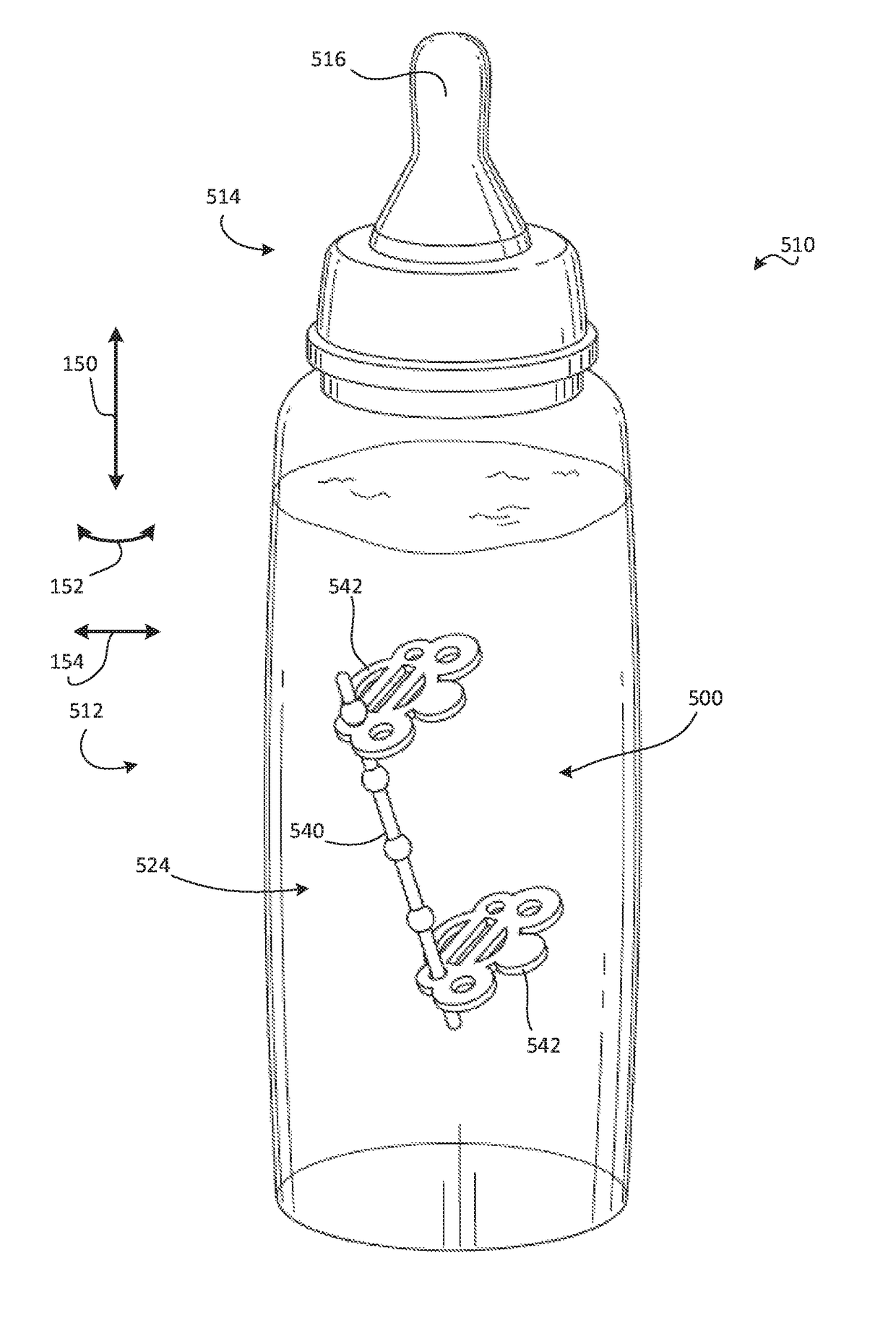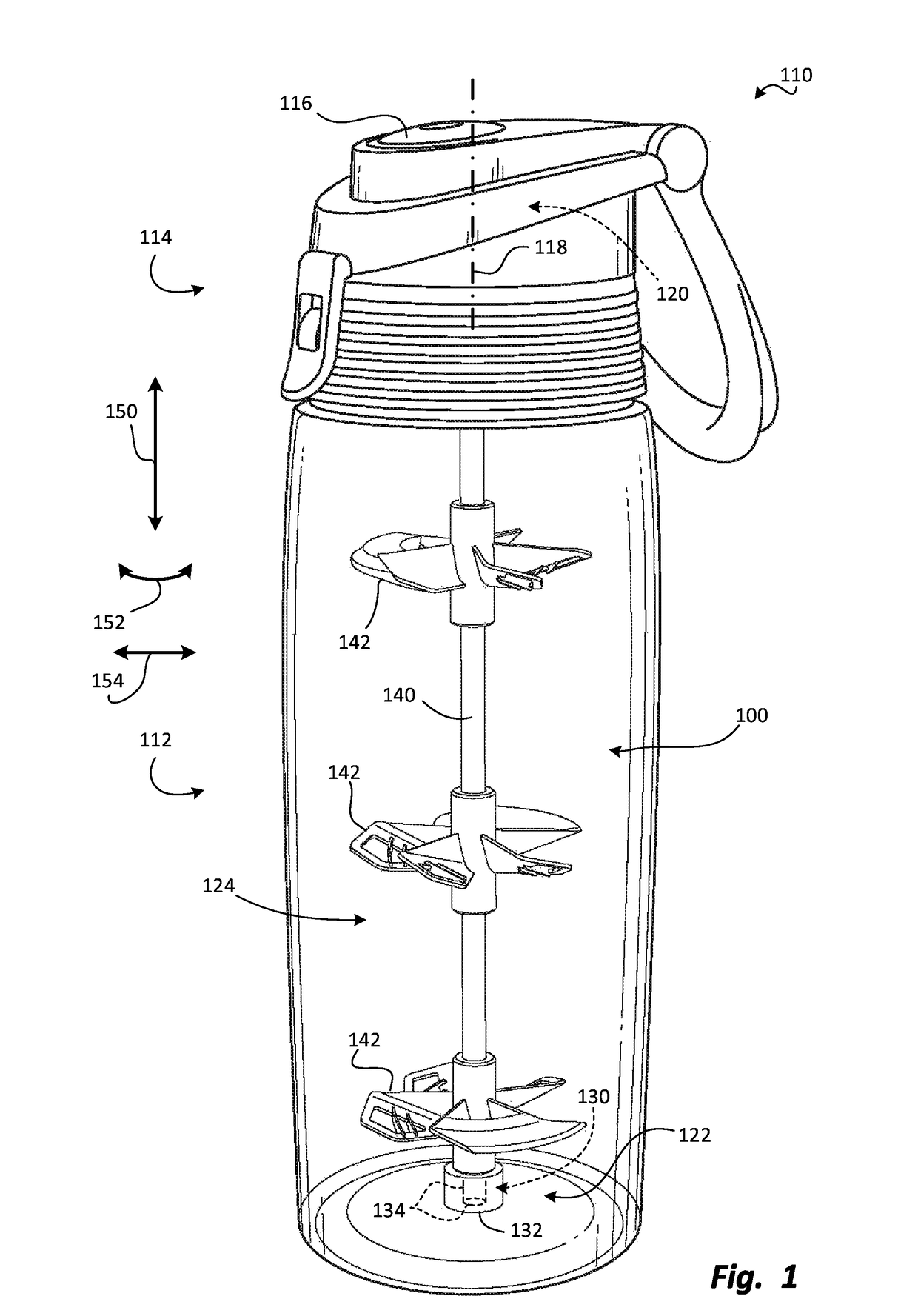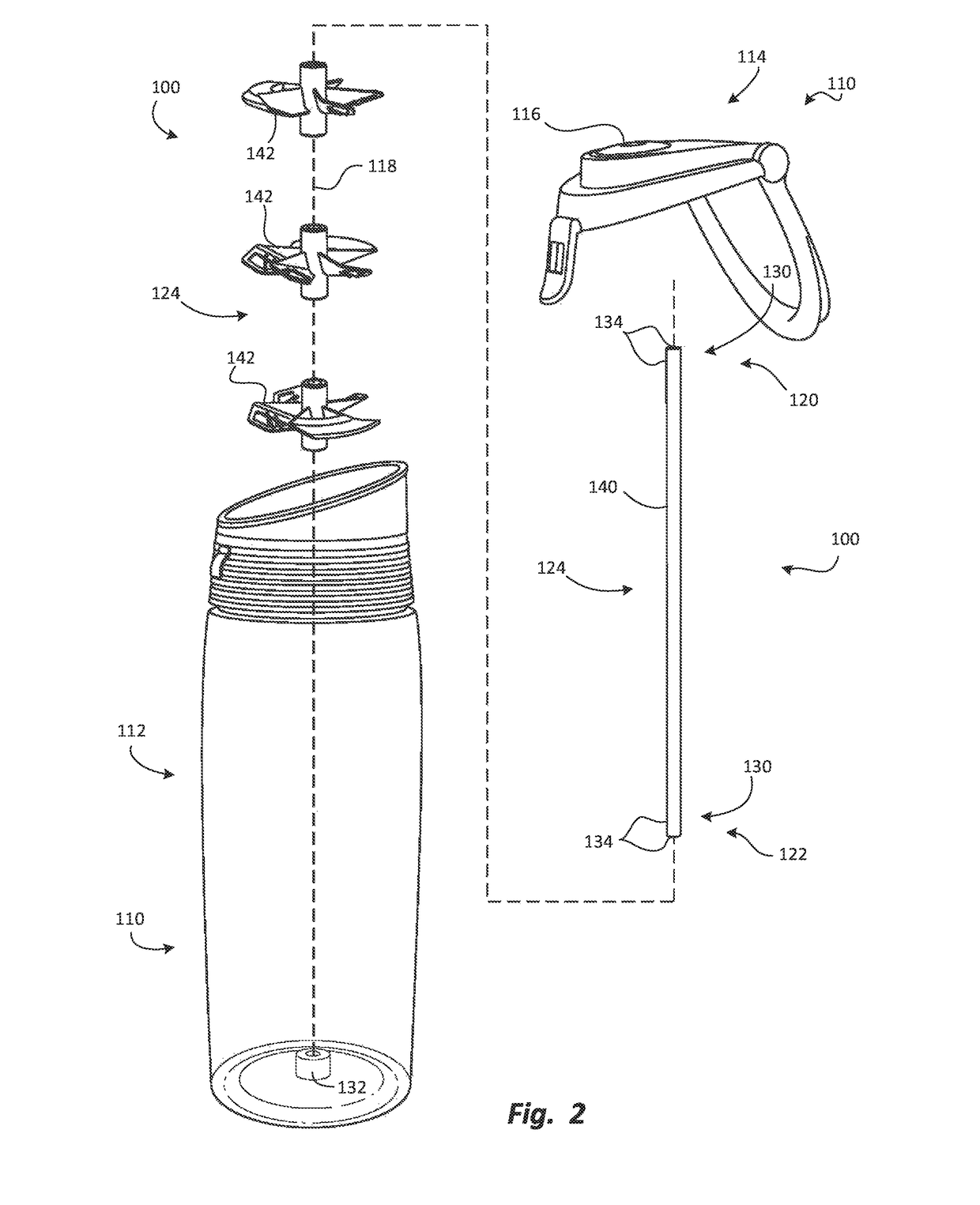Mixing systems and methods
a technology of mixing systems and methods, applied in the direction of mixing, chemistry apparatus and processes, mixers, etc., can solve the problems of unmixed ingredients, waste of ingredients, and inability to obtain the desired ratio of ingredients, so as to achieve more rapid and complete mixing, less unmixed residue, and enjoyable experience
- Summary
- Abstract
- Description
- Claims
- Application Information
AI Technical Summary
Benefits of technology
Problems solved by technology
Method used
Image
Examples
Embodiment Construction
[0033]Exemplary embodiments of the invention will be best understood by reference to the drawings, wherein like parts are designated by like numerals throughout. It will be readily understood that the components of the invention, as generally described and illustrated in the Figures herein, could be arranged and designed in a wide variety of different configurations and made out of any of a wide variety of different materials, such as plastic, silicone, metal, stainless steel, aluminum and the like. Thus, the following more detailed description of the embodiments of the apparatus, system, and method, as represented in FIGS. 1 through 8, is not intended to limit the scope of the invention, as claimed, but is merely representative exemplary of exemplary embodiments of the invention.
[0034]The phrases “connected to,”“coupled to” and “in communication with” refer to any form of interaction between two or more entities, including mechanical, electrical, magnetic, electromagnetic, fluid, a...
PUM
 Login to View More
Login to View More Abstract
Description
Claims
Application Information
 Login to View More
Login to View More - R&D
- Intellectual Property
- Life Sciences
- Materials
- Tech Scout
- Unparalleled Data Quality
- Higher Quality Content
- 60% Fewer Hallucinations
Browse by: Latest US Patents, China's latest patents, Technical Efficacy Thesaurus, Application Domain, Technology Topic, Popular Technical Reports.
© 2025 PatSnap. All rights reserved.Legal|Privacy policy|Modern Slavery Act Transparency Statement|Sitemap|About US| Contact US: help@patsnap.com



